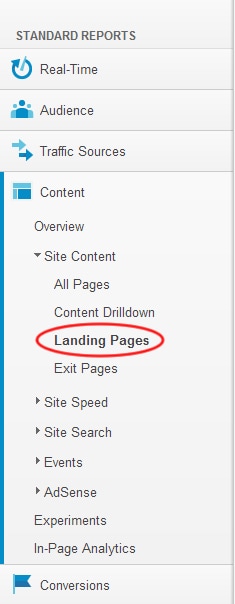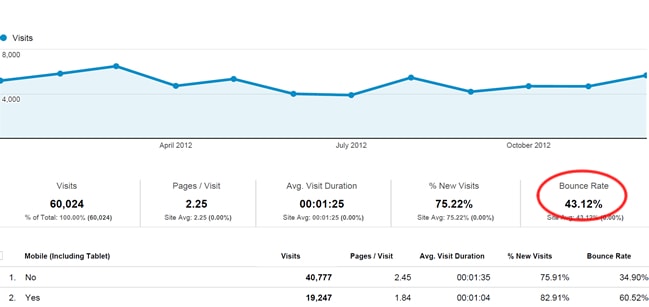
Google Analytics is a powerful tool when it comes to assessing the performance of a website. It allows e-businesses and web designers to get a clearer picture of how website users interact with their products and services. They can then establish which pages are the most successful and which need work. But in order to make the most of the facts and figures that Google Analytics provides, you need to be able to interpret the information with confidence. Only then can you start to use it to implement effective change.
A great place to start is your landing pages. This is where visitors enter your site and, contrary to popular belief, this is not always the home page. Learning where users enter your site and what they do from their point of entry is a great way to evaluate the effectiveness of each page and user pathway. For those still getting grips on the basics, check out this easy-to-use Google Analytics guide from SimplyBusiness, and then read on.
Getting Started
In Google Analytics, go to Content Pages => Site Content => Landing Pages to find your landing statistics. You’ll see which pages are most frequently landed on, the average time spent on the site, the number of pages viewed per visit, the percentage of new visitors and bounce rates.

The location of the landing pages link in Google Analytics
Landing Pages and Navigation
Identifying the pages that are most likely to be landed on may illuminate navigational problems. If users are most likely to enter your site on a blog page, for example, you need to show them quickly and clearly what else your site has to offer. Your site needs to be easy to navigate from every single port of entry. Even on static content pages – things like blog pages or points of further information – should include a call to action and intuitive direction to the rest of the site.
Bounce Rates
A ‘bounce’ occurs when a user leaves a site immediately upon entering, taking no follow up actions such as clicking to view another page, completing a site registration form or making a purchase. The ‘bounce rate’ is the percentage of visitors who ‘bounce.’ If bounce rates are high, consider these four things:
- Are the keywords taking visitors to your site relevant to your services? Think about modifying your onsite content to optimize relevant search terms.
- Does the landing page encourage further use? If your design isn’t sufficiently intuitive or fails to follow a logical eye path, visitors may be confused and leave. Web users don’t have the patience to learn to navigate a complicated site. Keep things simple and direct users in the clearest, simplest way.
- Does the page load quickly? Most estimates assume that the average visitor will “bounce” if the page they land on has not loaded within four seconds. Run your site through a website speed tester to get some hard numbers detailing out load times from various regions.
- Does the landing page include a clear call to action? If it is not obvious your users what the site does and why it’s there as soon as they land they won’t stick around to find out.

Use your bounce rates to help identify problem pages and build creative solutions accordingly. See the DeftCreative site for 20 ways to improve your bounce rate
Customize Your Statistics
For confident users of Google Analytics, the possibilities are endless. If you really want the lowdown on your landing pages you can set up custom reports to show you which routes through your site produce the most conversions and work to increase this for every page. The dimension of the report will be ‘landing pages’ and the metrics will be something like ‘entrances,’ ‘abandonment rate,’ ‘goals completed,’ and ‘value in $.’ (See here for a comprehensive dictionary of dimensions and metrics in Google Analytics).
Advanced Segments
You can then begin to look at advanced segments, to zoom in on particular search terms on landing pages or a certain stream of traffic (i.e. traffic from Twitter or a linked site). Certain terms or pathways will provide better conversion rates. Once you have got this information at your disposal, you can start to think carefully about why this is and then get creative thinking about solutions to up the performance of particular segments. The Google Analytics blogsite has a great introduction to advanced segments.
Conclusion
There’s always a reason for people’s actions on your website. Tracking the numbers behind these actions will benefit any webmaster, from beginner to pro. Testing, and subsequently recording how any site change affects user interaction will prove valuable in the never-ending quest for landing page optimization.
Want to learn more?
Want to get an industry-recognized Course Certificate in UX Design, Design Thinking, UI Design, or another related design topic? Online UX courses from the Interaction Design Foundation can provide you with industry-relevant skills to advance your UX career. For example, Design Thinking, Become a UX Designer from Scratch, Conducting Usability Testing or User Research – Methods and Best Practices are some of the most popular courses. Good luck on your learning journey!
(Lead image: Depositphotos)
